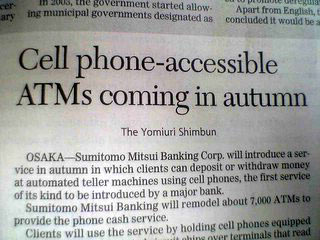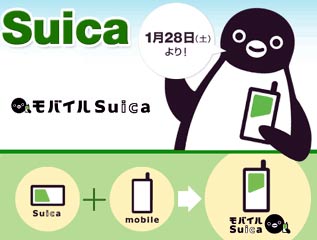 WWJ’s Lawrence Cosh-Ishii, our director of digital media and resident video and mobile guru, was in Tokyo this afternoon wrapping up a long day and heading for a few frosty Kirin lagers when he spotted this headline at a news kiosk. Normally, when we latch onto breaking Japan mobile news, we go into hypernewsroom mode, working the phones, Googling the keywords and pinging folks in the know to get as full and in-depth a report as we can — and get the gen onto the site pronto for our loyal WWJ community.
WWJ’s Lawrence Cosh-Ishii, our director of digital media and resident video and mobile guru, was in Tokyo this afternoon wrapping up a long day and heading for a few frosty Kirin lagers when he spotted this headline at a news kiosk. Normally, when we latch onto breaking Japan mobile news, we go into hypernewsroom mode, working the phones, Googling the keywords and pinging folks in the know to get as full and in-depth a report as we can — and get the gen onto the site pronto for our loyal WWJ community.
Today, in view of the fact that Tokyo’s Friday Happy Hour is already in progress, we decided to employ a little mobile Internet magic ourselves and get the info to you as directly as we can: Lars grabbed a snap with his trusty Sharp 3G camera keitai and fired it into the WWJ newsroom for more-or-less instant posting.
Oh yes: the news. Looks like Japanese mobilers will be able to access Mitsui Sumitomo ATMs using their phone starting this fall. Looks like the transaction will occur via the FeliCa IC chip. You’ll probably just have to set the phone on a little alcove in the machine and press some keys. More details when we get them. Have a great weekend and happy ‘Beer O’Clock’ wherever you are!


 On a sunny Saturday morning here in Tokyo, Japan Rail launched their long-awaited
On a sunny Saturday morning here in Tokyo, Japan Rail launched their long-awaited  WWJ’s Lawrence Cosh-Ishii, our director of digital media and resident video and mobile guru, was in Tokyo this afternoon wrapping up a long day and heading for a few frosty Kirin lagers when he spotted this headline at a news kiosk. Normally, when we latch onto breaking Japan mobile news, we go into hypernewsroom mode, working the phones, Googling the keywords and pinging folks in the know to get as full and in-depth a report as we can — and get the gen onto the site pronto for our loyal WWJ community.
WWJ’s Lawrence Cosh-Ishii, our director of digital media and resident video and mobile guru, was in Tokyo this afternoon wrapping up a long day and heading for a few frosty Kirin lagers when he spotted this headline at a news kiosk. Normally, when we latch onto breaking Japan mobile news, we go into hypernewsroom mode, working the phones, Googling the keywords and pinging folks in the know to get as full and in-depth a report as we can — and get the gen onto the site pronto for our loyal WWJ community.